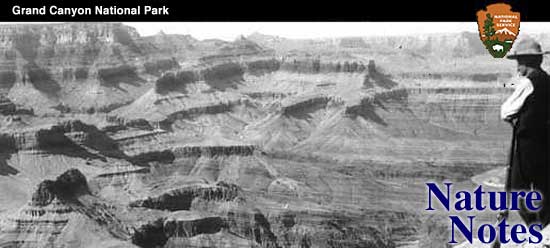

|
ON June 6, 1932, in company with Mr. Lewis D. Yaeger, I visited the locality of Bly (elevation about 6200 feet) on the Santa Fe branch road between Williams and Grand Canyon, Arizona. This station is about seventeen miles from Williams. The flora is typical of the forest phase of the Upper Sonoran Zone, there being dense woods of pinyon and juniper with open land of grass. In washes are sometimes found thickets of deciduous shrubs. Most observations of note refer to nesting records of which there are relatively few published from Northern Arizona. Also, these observations differ somewhat from notes on localities of similar flora in the San Francisco Mountains. Western Red-tailed Hawk (Buteo b. calurus). Our main object in visiting this locality was admittedly to band juvenile Red-tails. Mr. Yaeger had reported to me that this species was a common breeder about Bly though not nearly so abundant as at Anita some miles away and somewhat lower. Only two nests of this species were examined, however, as our time was limited, One of these nests still held a young hawk about ready to desert it. Our reception by this interesting bird was most amusing as it arose upon legs still weak and stretched itself, craning its neck so it could get a better view through the juniper boughs. Fortunately the nest was not more than fifteen feet above the ground for the bird bravely launched itself into the air when Mr. Yaeger had almost reached it. The bird was caught as it lighted upon the ground and soon was banded. Both parents circled overhead but remained at a safe distance, never coming within 200 yards. The other nest, near the top of a pinyon tree, contained three fuzzy balls of down which could hardly raise their heads to stare at the intruder. A cloudy sky and high winds made it almost impossible to take a picture from the precarious perch near the end of bending boughs of brittle wood. Golden Eagle (Aquila e. canadensis). No adult eagles were seen, although Mr. Yaeger took me to a tall residual pine in which there was a nest. The tree was in Laws Spring wash, only about 150 yards north of the railroad and in clear view of passing trains. On the west side of the wash was the edge of a mesa, only a few rods distant, from which was had a good view of the nest. Earlier in the season, Mr. Yaeger had here successfully photographed a young eagle only a few days old, and had also secured later pictures. It was our intention to again photograph the bird, thus obtaining a good series of pictures illustrating plumage development, after which the eaglet was to be banded. To our sorrow we found that some thoughtless person had recently shot the young bird while it was still on the nest.
The nest, about forty feet up, and on the northeast side of the tree, was built close to the trunk. The body of sticks once supported a cup lined with juniper bark, but when examined, the cup was almost flat. The mass of nesting material was two feet in width and two and one-half feet in thickness. Around the dead bird was refuse, the most recent of which was a half-devoured cottontail. Similar refuse littered the ground beneath the tree. Mr. Yaeger informed me that to his knowledge this was the third year that this nest had been occupied by this species, and it is to be hoped - since we cleaned out the nest - that it will again be used. Pacific Horned owl (Bubo v. pacificus). Homed owls were reported to be common in the neighborhood, and a recently abandoned nest in a juniper tree was pointed out to me. In late April Mr. Yaeger secured some excellent photographs of young owls in this nest just before the birds could fly. Red-shafted Flicker (Colaptes c. collaris). Several flickers were seen and one, a female, was observed in a hole in a telephone pole, about the only available wood at that place which was large enough for her nest. In the San Francisco Mountains I have yet to find this bird nesting in the Upper Sonoran Zone. Say's Phoebe (Sayornis s. saya). I was surprised to find a nest containing three eggs under the roof of a shed. In the San Francisco Mountains I have recorded Say's Phoebe only during migrations, though a good part of three summers has been spent there in the Upper Sonoran Zone. The bird was flushed from the nest and later returned, so I presume the eggs were partly incubated.
Mountain Bluebird (Sialia currucoides). Two nests of this species were found. One was over a window in an abandoned shack where the only possible entrance was through a broken window on the opposite side of a single room. In the nest were three naked young. The other nest, which contained eggs, was in a deep hole in a dead tree. These observations confirm those made by me near Flagstaff where this bird also nests in the Upper Sonoran Zone below the summer range of the Chestnut-backed Bluebird (Sialia m. bairdi), thus seemingly belying its old name of "Arctic Bluebird". Spurred Towhee (Pipilo m. montanus). To find this bird at home, scratching among dead leaves beneath thickets in the washes of the Upper Sonoran Zone was indeed unexpected, as I have rarely observed it in summer in the San Francisco Mountains, and then only in the most favorable localities, principally in the Transition Zone. No nests were found though the time of year and presence of both sexes would seem to indicate they were on their nesting ground.
| ||||||
| <<< Previous | > Cover < | Next >>> |
vol8-6c.htm
14-Oct-2011